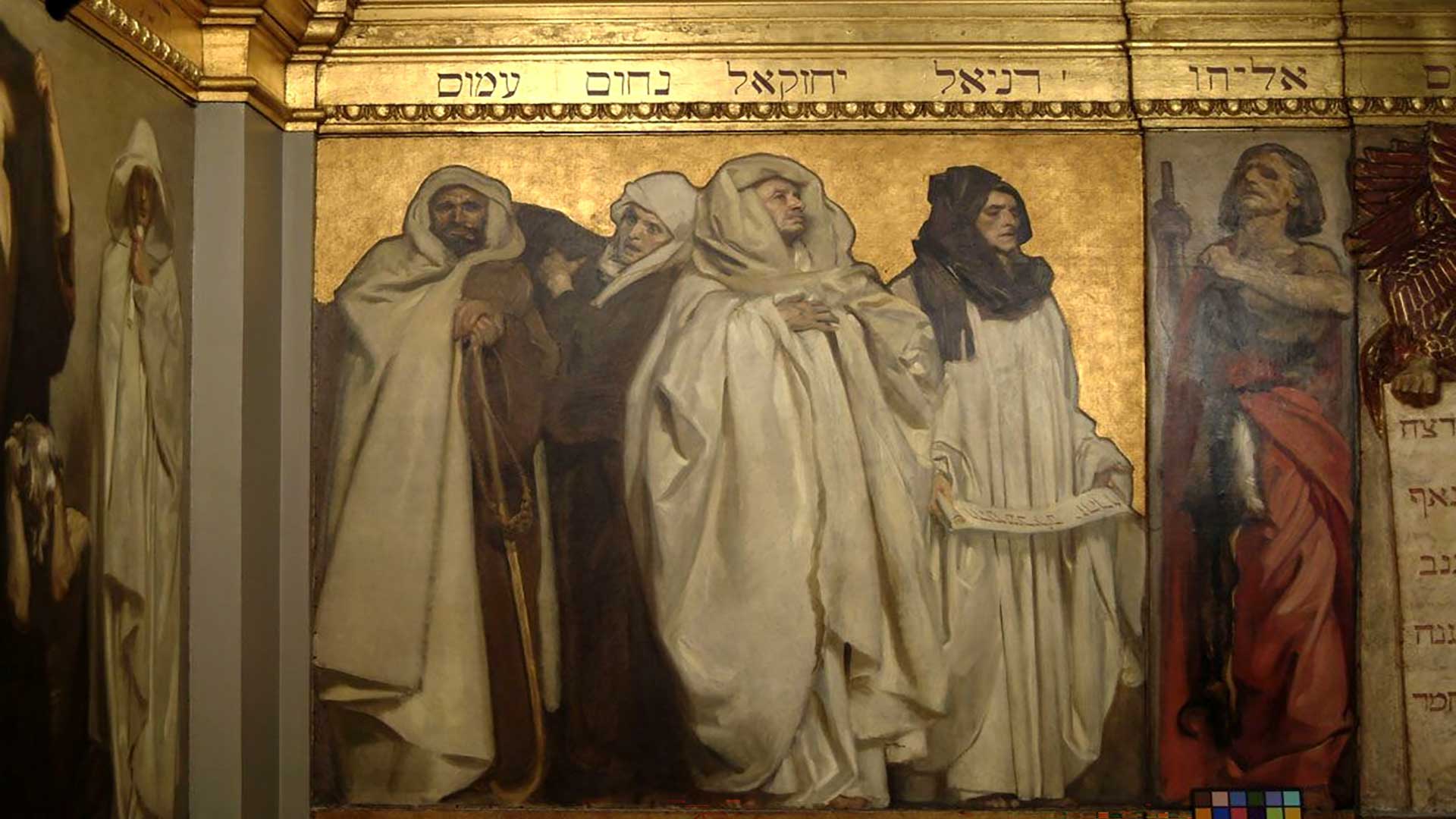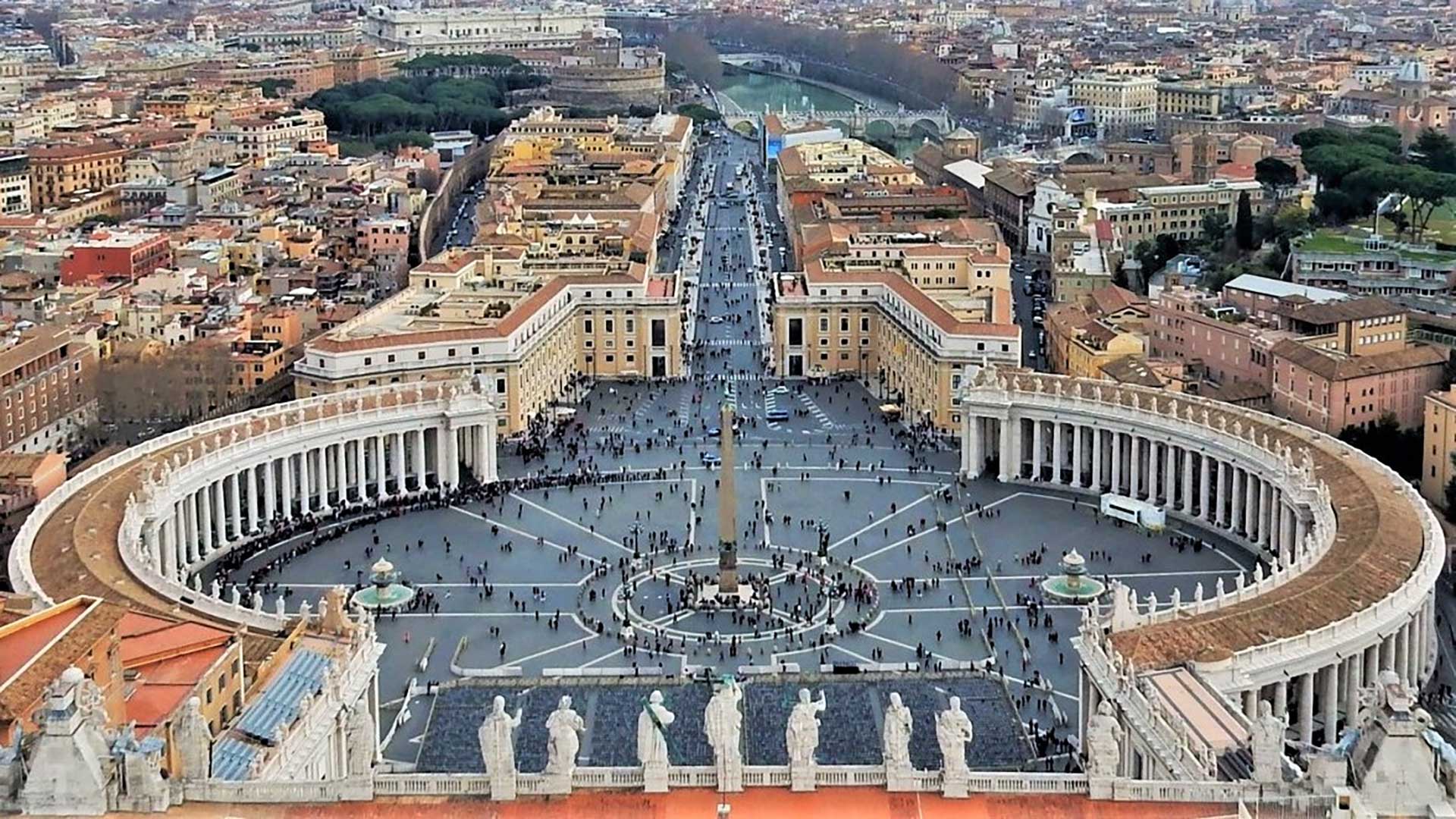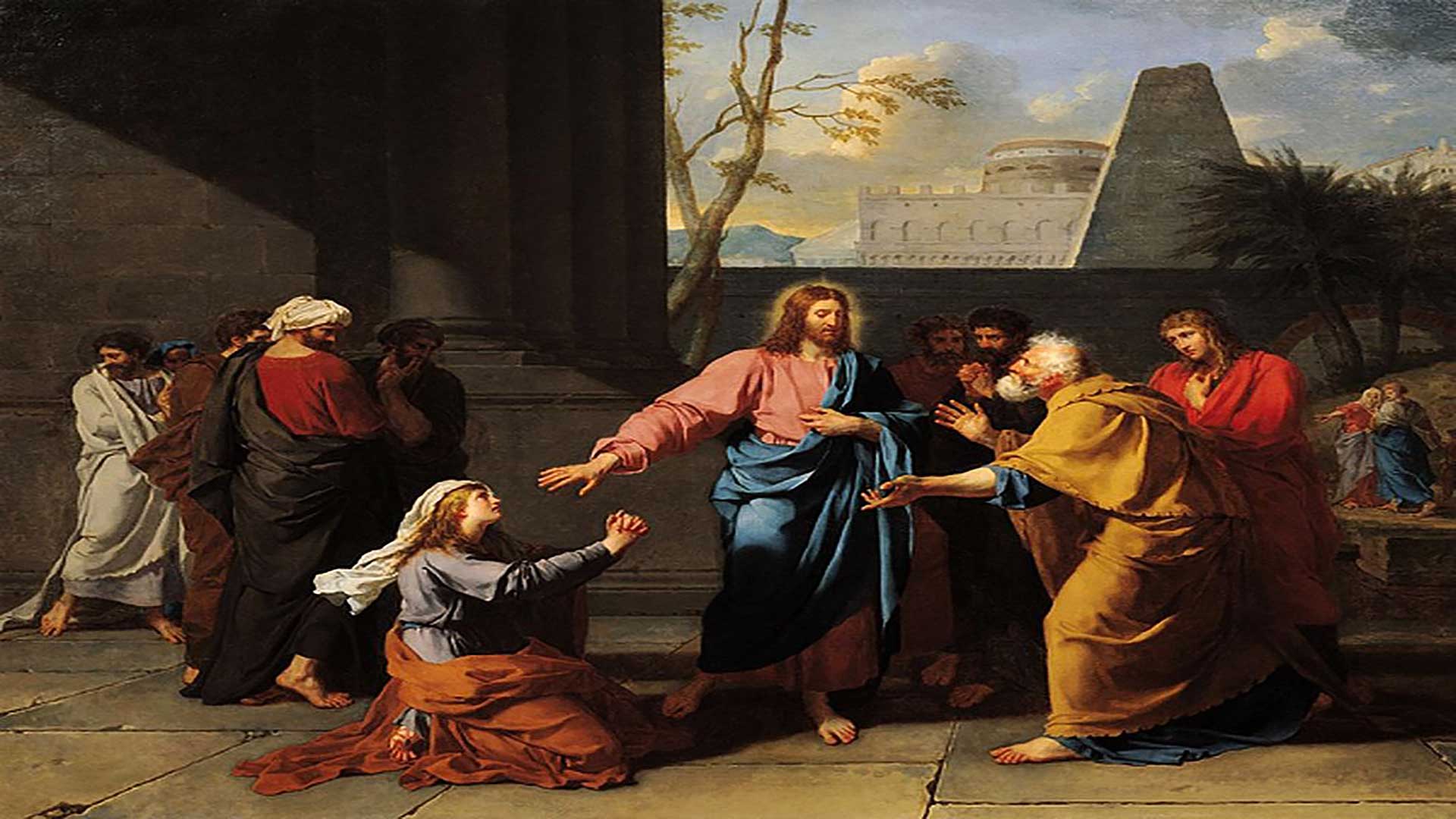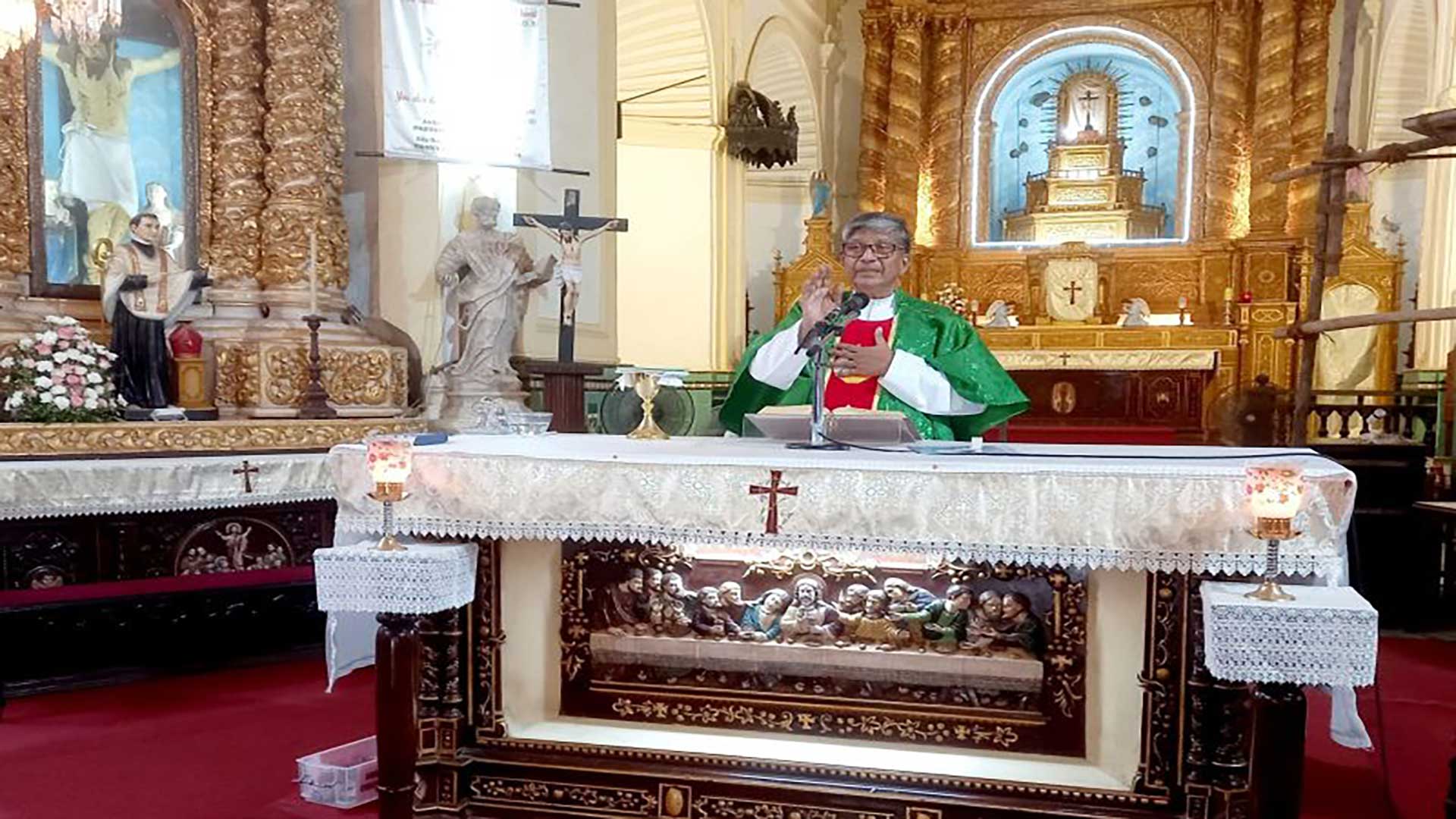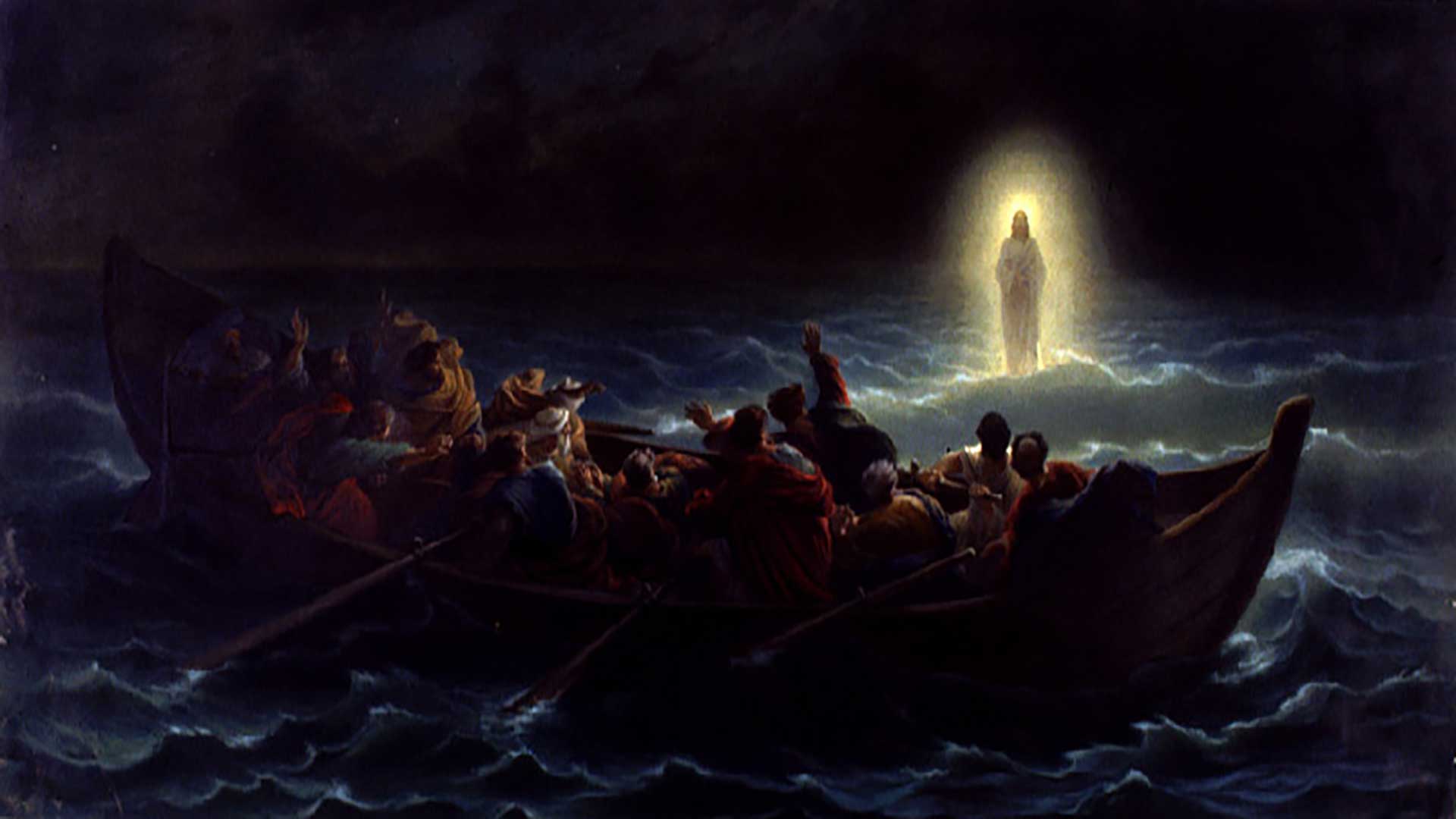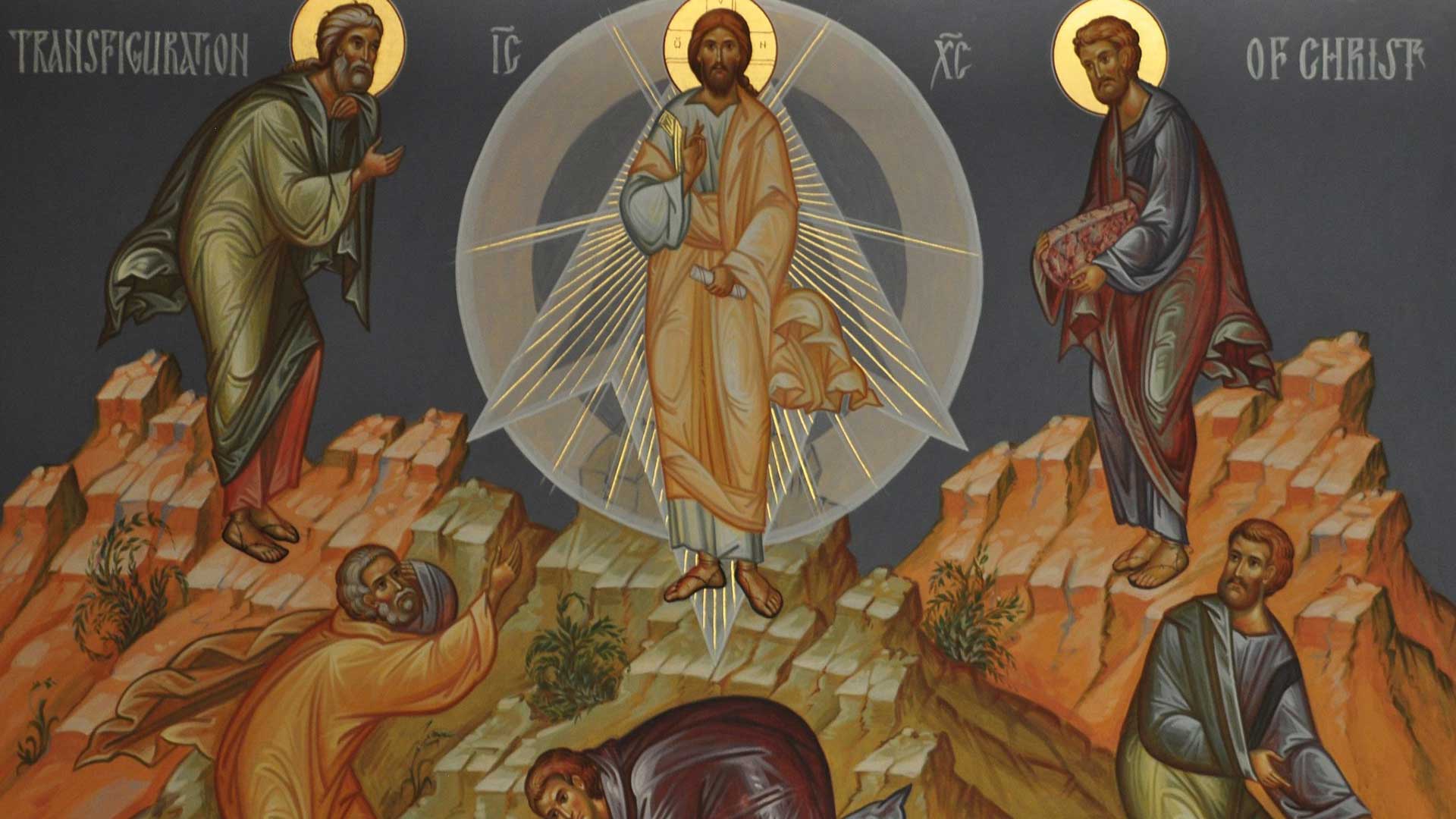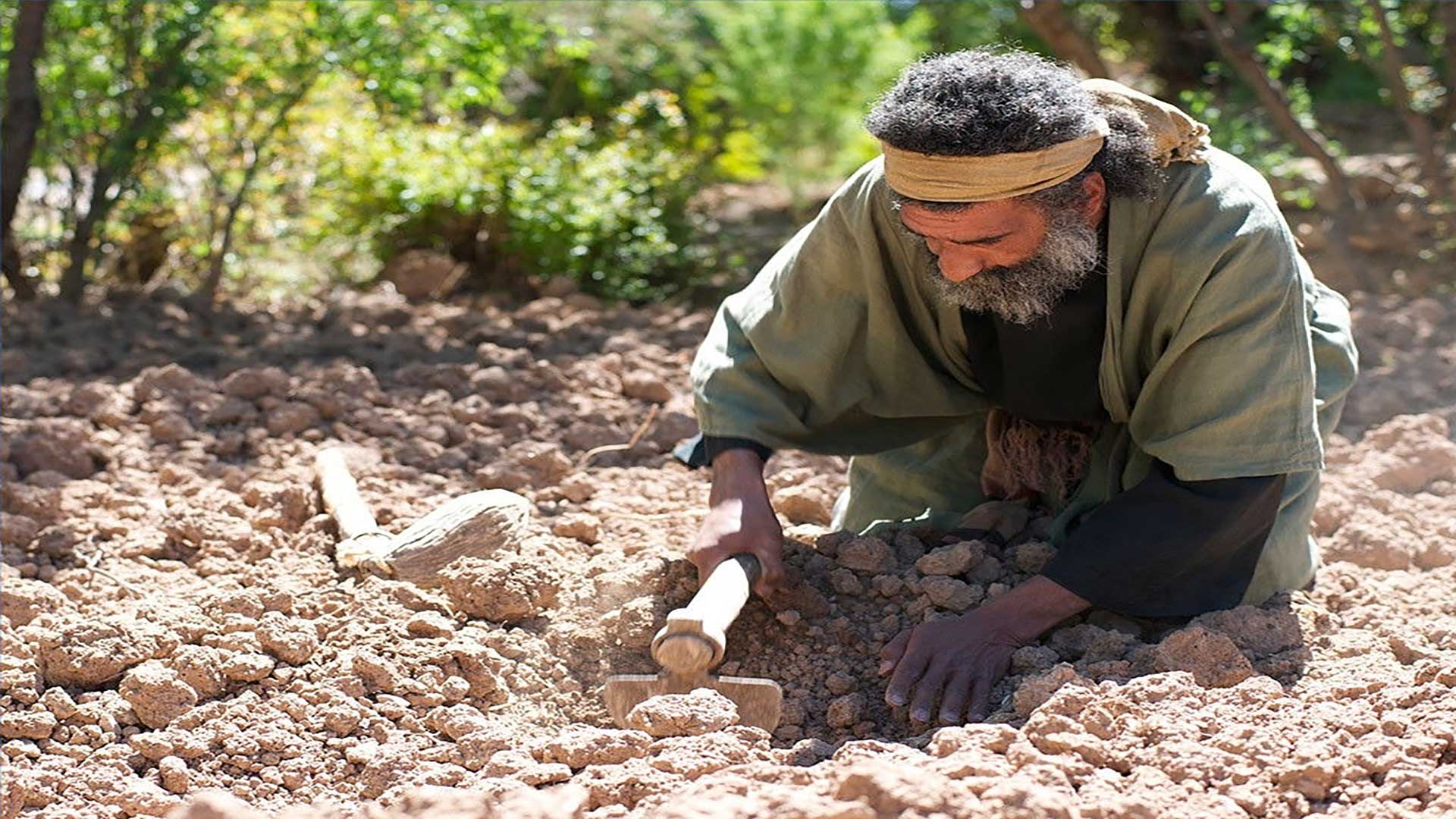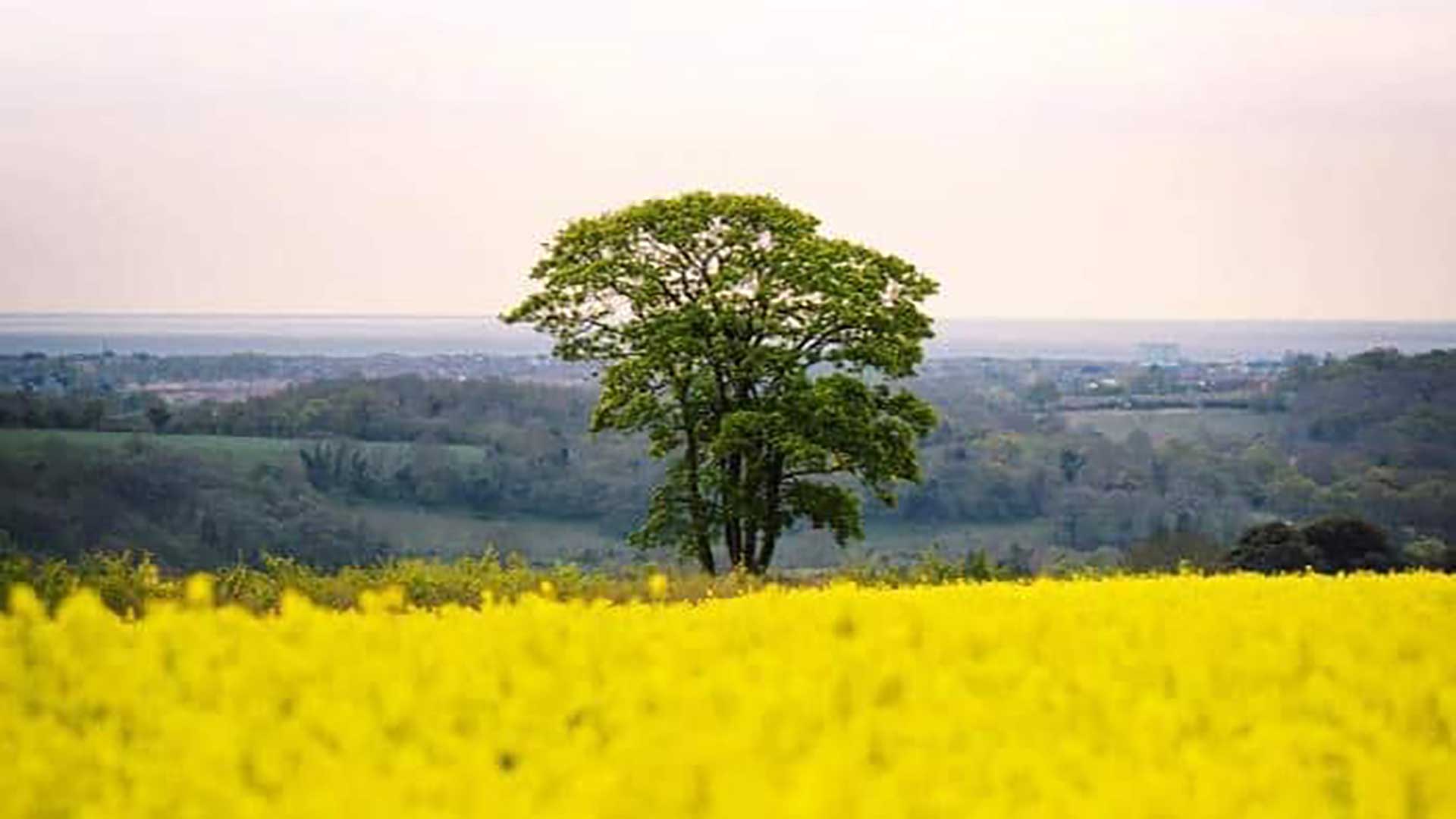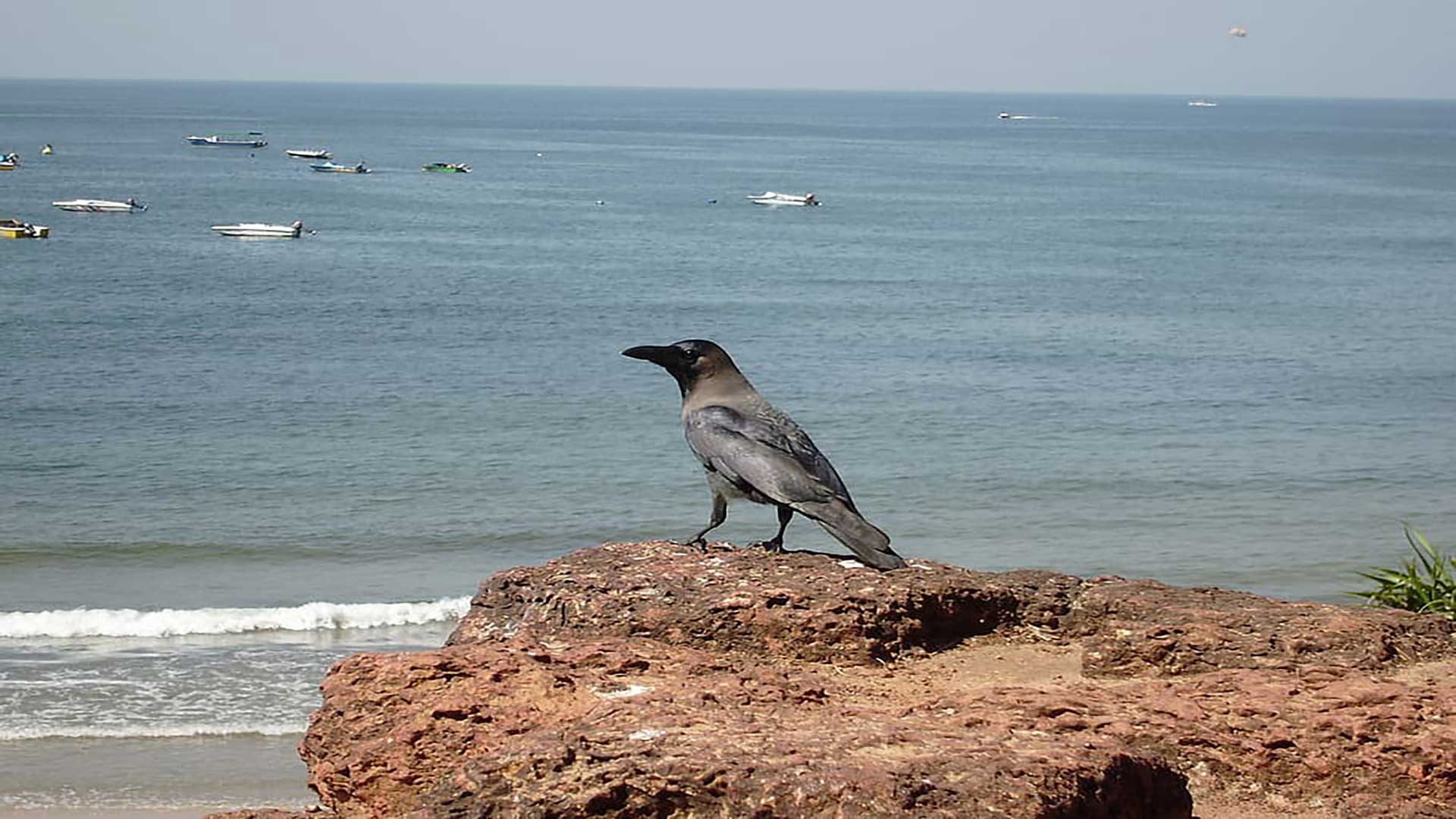Cutting against the grain
September 10, 2023Mass Readings
We are living in difficult times, a far cry from when elders had the authority to correct youngsters. In the past, children weren’t pulled up by their parents alone; just anyone felt empowered to reprimand any erring person. There probably were abuses in this regard, but then, by and large, life was based on well-established rules, customs, traditions. This ensured a system of checks and balances among individuals or groups of people.
To say that it is easier said than done is to adopt the past of least resistance. We fail to notice how, on the other hand, forces of evil have long been proactive in toppling authority and ushering in a reign of unbridled freedom. It is by a “Revolution” such as this, as the Brazilian Catholic thinker Professor Plínio Corrêa de Oliveira prophetically describes in his book Revolution and Counter-Revolution,[1] that we have come to this pass. Relativistic thinking – the belief that there is no absolute truth, right and wrong, true and false, good and bad – has pulled the rug from under our feet.
Against this background, are we in a position to “warn the wicked to turn from his way” as in the First Reading (Ezek. 33: 7-9) God urges that Prophet of the Spirit of God to do? The wicked would quickly retort: ‘Who are you to admonish me? You may think you are right, but I too am right!’ This is the tenor of the times. Nonetheless, we ought to pay heed to God’s warning that the “wicked man shall die in his iniquity, but his blood I will require at your hand.”
If the wicked do not change their ways, they shall die, whereas we shall have the consolation of having corrected them, and shall be saved. Let us therefore pluck up the courage to do our duty. The open secret is to act with tact and consideration; not out of self-interest, but out of love. It is quite another matter if our love and concern are misconstrued; others will always judge us by their standards, sometimes making grief the price we have to pay for the love we have shared. How many of you can relate to such a situation?
In what way do we express love? St Paul in the Second Reading (Rom 13: 8-10) says: “Owe no one anything, except to love one another… for love is the fulfilling of the law.” But again, what is this love? It is not amorous and sentimental love that is in question here but, rather, the love of God – the first of the Christian virtues which involves following His commandments. Which is where a secular or an atheistic society makes it fundamentally difficult for Christians to have a lucid notion of the divine order of things and follow it. Nowadays, it is more about pleasing ourselves than about pleasing God; and those who stand by Him are considered out of step with the times. A recipe for disorder indeed.
Disorderliness has been part of the human DNA ever since Original Sin; and the situation keeps getting worse every time we offend God. That is why, in a godless world, misunderstanding, anger, resentment, bitterness, hatred, friction and strife are widespread. Note the instances of cold war, not to speak of open criticism, badmouthing and even lawsuits between family members – instead of justice sought through the Church.

As the Gospel (Mt 18: 15-20) recommends, “If your brother sins against you, go and tell him his fault, between you and him alone. If he listens to you, you have gained your brother.” And there is a whole set of steps to be taken to reach the logical conclusion. And what Jesus further tells His disciples is sublime: “Whatever you bind on earth shall be bound in heaven, and whatever you loose on earth shall be loosed in heaven.”
All this calls for effort, dedication and care. Above all, it calls for prayer, for Our Lord has said, “Where two or three are gathered in my name, there am I in the midst of them.” It speaks volumes of the close connect between Heaven and Earth, of us as God’s children who He loves and cares for, and of the free will He has endowed us with. And “if two of you agree on earth about anything they ask, it will be done for them by my Father in Heaven,” is not business management or the product of our efforts, but divine management!
So, how does the life of an honourable person look like in our day and age? According to Professor Oliveira, he or she is often forced to keep “a disheartened silence – a sad condition: ‘Vae Soli’ (‘Woe to him that is alone’).”[2] For its part, society, by either overtly or covertly saying that God is dead, makes the confusion worse confounded. At any rate, while we put our hope and trust in God alone, we ought to persevere on our path of denouncing evil when we encounter it and promoting peace. If the Son of Man Himself was put to death, what more can we say about cutting against the grain?
[1] https://www.pliniocorreadeoliveira.info/UK_RCR.pdf
[2] Ibid., p. 58
God’s Spirit beckons
September 3, 2023Mass Readings
We are spirit and matter, and what really matters is the spirit. This is something the human race has been grappling with since its inception. Jeremiah and Job alike have addressed the issue, but it is only Jesus who provided the right answers, He who is the Way, the Truth and the Life!
The Book of Jeremiah, from which the First Reading (Jer 20: 7-9) is taken, catalogues the Prophet’s woes. It reads like a spiritual diary or confessions spanning the four decades (626 BC to 587 BC) of his prophetic tenure. He tells his countrymen in no uncertain terms that their Babylonic exile is a punishment, a consequence of their unfaithfulness by way of pagan worship.
But alas, none paid heed; they went on with their life, as though Jeremiah were a madman, a mere voice of dissent crying in the wilderness. This only goes to show that a man of God is not without his share of problems; he is at the receiving end of fellow humans and, at times, quite ironically, he feels forsaken even by God. Jeremiah was a man who cried his heart out, and is nicknamed ‘the Weeping Prophet’. For indeed, the greater his obedience to the task entrusted to him by God, the more he suffered.
You and I have also felt the same and in vain have we tried to make sense of it all, haven’t we? Oddly, Peter who had a little earlier recognised Jesus as the Messiah and Son of the Living God, is suddenly repulsed by the idea of His Master’s suffering and death – the first prediction of His Passion – much as you and I are baffled by those twin problems in our day and age. However, trust Jesus Christ to give us the right perspective. In today’s Gospel text (Mt 16: 21-27), He says: “If any man would come after me, let him deny himself and take up his cross and follow me. For whoever would save his life will lose it, and whoever loses his life for my sake will find it.” (24-25)
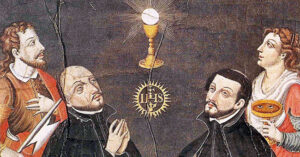
If back in Jesus’ time, his disciples stood bewildered, do you think that exhortation would go well with the materialistic world we live in today? Following Jesus is therefore no easy task – but, then, who on earth can give us a better way? It simply means we should be walking the proverbial narrow path – which is the only sure one after all! And to highlight his admonition, Jesus dismissed Peter as being a ‘tempter’, like Satan, a stumbling block on His path to the redeeming Cross. All that Peter should have done was faithfully followed the Master's directives; and we too should, for the stakes are high, as famously expressed by Jesus: “For what does it profit a man if he gains the whole world and forfeits his soul?”
So, it’s clearly a choice between this life and the next, between temporary successes and eternal loss. Centuries later, the Divine Master’s life-giving rhetoric is said to have clinched Ignatius of Loyola’s conquest of Francis Xavier’s soul. While at the renowned Sorbonne in Paris, the Basque youth was deeply in love with life and knowledge; he aspired to rise and shine in a boundless world of scientific advances and geographical discoveries. New avenues of learning in the fields of philosophy, poetry, art, political science, and so on, fostered a humanist spirit at the same time as it changed man’s relationship with God.
We who have recently witnessed Chandrayaan and other success stories, are we going to be so completely taken up by earthly promises that we let them eclipse our resurrection story? Let us not give into a romantic idea of life and forget that suffering is for real, for whoever dodges it will regret their folly. As a faithful people of God, let us heed St Paul’s powerful appeal in the Second Reading (Rom 12: 1-2): “to present your bodies as a living sacrifice, holy and acceptable to God, which is your spiritual worship.”
Whereas in Jeremiah’s time, the Jews were plagued by the Babylonians, in Jesus’ time it was the Romans that besieged them. On both occasions it was in retribution for pagan worship. And what of our time? Alas, we have embraced the ways of the world; we are ready to bow or bend over backwards to please earthly masters and idols. We have forgotten and offended God no end. Hence, the urgency of the Pauline call: “Do not be conformed to this world but be transformed by the renewal of your mind, that you may prove what is the will of God, what is good and acceptable and perfect.” That is the Life in the Spirit beckoning us!
Banner: https://rb.gy/v5868
Governed by God
Countries today pride themselves on having governments ‘of the people’, but alas, they can’t hold a candle to what were once upon a time governments ‘by God’! Who can deny that governments inspired by the True God and upheld in Faith can better realise God’s kingdom on earth?
In the First Reading (Is 22: 19-23), look at how Shebna, the royal steward or prime minister in the reign of king Hezekiah of Judah, was ejected from office because of his pride. He was replaced by Eliakim, the son of Hilkiah, an influential Hebrew priest. What better example can there be of political recall?
No doubt, many modern constitutions provide for recall, but very often the process is flawed. On the other hand, Isaiah tells us about how God intervened to provide quality governance for His people. It is a pity that we have lost our connection not only with our political leaders but with God Himself, who is undeniably the author of all that we have and enjoy.
In the Gospel (Mt 16: 13-20), we see how and why Peter was chosen to lead the flock. His name was Simon but Jesus called him Kepha (from the Aramaic, ‘rock or stone’) which in the Greek and Latin tradition translates as Petros/Petrus. He was the first disciple to express faith in Jesus as the Messiah and Son of God: “You are the Christ, the Son of the living God.” This was revealed to him by the Father in Heaven. Hence, although Peter was humanly imperfect and would thrice deny his Master, Jesus drew him into His inner circle.

That is to say, Jesus knew Peter, and vice-versa, and on that Rock He built His Church. That change of name indicates a mission was given to him, as happened to Abraham and Jacob. Come Pentecost, Peter overcame his faint-heartedness and began to preach boldly. He founded and led the churches of Antioch and Rome. And what a leader and first Pope he was – true to his faith and to his people; he did not gaslight the fledgling community but encouraged them, suffered and died for them, crucified upside down, in Rome, under Emperor Nero.
The uniqueness of our Holy Mother Church is that she is made up of sinners who have nonetheless been called to be followers of Christ! Or else, who would qualify? Such magnanimity is humanly incomprehensible; hence, St Paul, in the Second Reading (Rom 11: 33-36) observes: “Oh, the depths of the richness of the wisdom and knowledge of God! How unsearchable are his judgments, and how inscrutable His ways!”
More importantly, the greatest proof of the Church’s divine nature is the many storms she has withstood down the centuries. The same applies to the supremacy of the Petrine office as intended by Jesus. No human institution of that magnitude – if there is any other – would ever survive; but we have the assurance that “the gates of the netherworld shall not prevail against it.” It is a very illuminating and comforting promise; it is also a matter of pride, but can we bask in Her glory and be complacent?
Not at all. No doubt, the Church will not die if we persist in our near-Faustian folly; we will. So, it is up to us to do whatever possible to help our community of faith. With the gathering clouds of suspicion and doubt within the Church (especially with Synodality, which is set to change the order of things), we have to pray for the successors of Peter to be faithful to Scripture and Tradition. And you and I, rather than focus on acquiring wealth, power, influence and success, we ought to see the futility of such aspirations.
Most importantly, Jesus’ forthright question “Who do you say I am?” is a call to get to know Him more closely. Only then we will work wholeheartedly for God’s Kingdom to be realised on earth, acknowledging joyfully: “For from Him, and through Him, and in Him are all things. To Him is glory, for all eternity. Amen.” This will open our minds and hearts to God, will let ourselves be governed by Him and be living signs of the presence of Jesus in the world.
From old Baal to a new Babel?
All three Readings of today challenge us to understand our Faith without beating about the bush; they are as forthright as forthright can be.
The First Reading (Is 56: 1, 6-7) is about being just and righteous if we are to be saved. None will be excluded from God’s salvific plan – neither the eunuchs (traditionally thought to be devoid of God’s favour) nor the foreign nations – provided they honour God’s law in letter and spirit. Israel, chosen to lead the nations to the True God, chose instead, disloyally and ungratefully, to worship Baal and other gods. To them Isaiah made known in no uncertain terms that God would move on and invite peoples of all nations to the holy mountain, making them joyful in His house of prayer. This finally happened when the Good News of Salvation through Jesus Christ was proclaimed to the world by the Apostles.
Meanwhile, it may be noted that a “house of prayer for all peoples” is by no means a free-for-all but rather a house where only the True God reigns; it is surely not an interfaith complex like, say, the Abrahamic Family House comprising a mosque, a church and a synagogue, recently inaugurated in Abu Dhabi, UAE. This attempt to put religions on par is evidently a gross violation of the First Commandment: “Thou shalt have no other gods before me.” And alas, this is only the beginning. Other places of worship are on the horizon, to complete the panorama of a pantheistic philosophy that will serve as a basis of a modern babel of religions.
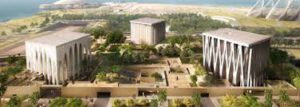
Today’s Gospel passage (Mt 15: 21-28) provides an eloquent response. It is proof enough of the Divine Master wants his followers to zealously guard the Faith. Why did He give the cold shoulder to the Canaanite woman who had asked Him to exorcise her daughter? By stating that He was sent “only to the lost of the house of Israel” he excluded from His purview the Canaanites who, being idol worshippers, were regarded as enemies of God and a threat to God’s people. Jesus added: “It is not fair to take the children’s bread and throw it to the dogs.” This may sound insulting to modern ears, but Jesus who always called a spade a spade, had no qualms about separating Light from Darkness. Our eternal salvation is at stake if we fail to acknowledge the difference.
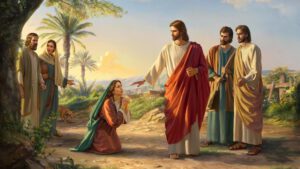
How, then, could a document be signed stating that diversity of religions is willed by God? This easily "relativizes the uniqueness of faith in Jesus Christ,” as Bishop Athanasius Schneider put it. Now, if Jesus discriminated against the Canaanite woman, it was not to demean her but to test her faith. So, when the plucky woman retorted, “Yes, Lord, yet even the dogs eat the crumbs that fall from their master’s table”, Jesus relented and famously said, “O woman, great is your faith! Be it done for you as you desire.” Her daughter was healed instantly.
How often today do we find people of other religions visiting Catholic places of worship! Oh, the faith with which they come and ask for the gift of a child, a job, a spouse, resolution of conflicts, physical healings, peace of mind and heart; they approach Jesus with deep humility and acknowledge His power! And many return to thank Him for favours, graces and blessings received. But alas, you and I who are born Catholics, how often do we take our faith for granted, going on from day to day as though there were nothing marvellous happening in our lives and nothing to be eternally grateful for!
Couldn’t our unfaithfulness alone account for much of the confusion into which the world has plunged?
In the Second Reading, St Paul (Rom. 11:13-15, 29-32) is sorry that his country has been unfaithful, but is also quick to point out that God can write straight with crooked lines – for, after all, “the gifts and the call of God are irrevocable.” There is no doubt that Israel officially rejected the opportunity to proclaim the Good News, but that did not prevent God from reaching out to the rest of the world. And the same mercy that He has shown Israel, He will show the nations.
That is the ultimate miracle we shall witness by our faith and trust in God. Baal and Babel will be no more: His Sacred Heart and the Immaculate Heart of His Mother will triumph, for it is said: “So shall my word be, which shall go forth from my mouth: it shall not return to me empty, but it shall do whatsoever I please, and shall prosper in the things for which I sent it.” (Is. 55: 11)
Goa's only Sunday Mass in Portuguese
Three questions posed by Goa-based journalist Alexandre Moniz Barbosa and my replies (which he translated into Portuguese) as part of his report titled "Uma missa com uma história que mantém viva uma língua", published in Somos! https://somosportugues.com/2023/08/11/uma-missa-com-uma-historia-que-mantem-viva-uma-lingua/
You've been attending the Portuguese mass for years. For some time it was your family that was keeping it going. How was that experience?
I have been attending Sunday Mass in Portuguese since 1970, when the post-Vatican II Ordinário da Missa was published. As we spoke Portuguese at home, attending Mass in the same language was the most natural thing to do. My dear departed father helped out by allotting the Readings and we as a family were an integral part of the choir. In the 1980s, we witnessed traditional hymns slowly giving way to modern tunes (some of them Brazilian). That hymnal, Cantemos Juntos, is still in use.
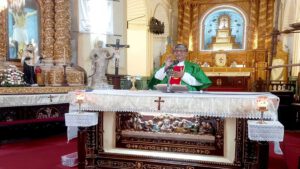
Why do you think having a Portuguese mass in Goa is important?
Churches and chapels in Goa discontinued Mass in Portuguese two decades ago, but the capital city’s main church has held fast to tradition. Successive parish priests have happily obliged even though the number of attendees has dwindled over the years. It is also remarkable that even now there are people who feel comfortable attending Mass in Portuguese. When Goa’s tourist season begins, in October, Portuguese-speaking visitors make it a point to fulfil their Sunday obligation at the church of the Immaculate Conception.
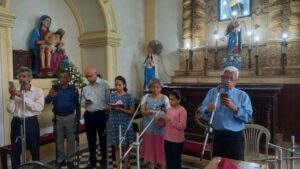
How would you motivate youth to come to this Mass?
This Mass has a niche attendance. The labourers are few, so to say, and practical difficulties many. On the other hand, there are easier options available, in English and Konkani. All that has made it somewhat tough to keep the Mass going. However, of late, thanks to the revival of interest in Portuguese, many youngsters learning the language in schools and colleges are happy to come and even sing in the choir alongside the seniors. Recently, a young visitor from Maharashtra told me that he had felt transported to Portugal!
(Pic credits: AMB)
Faith and Fortitude
Experiencing turbulence in the sea or in the air can be a good test of our faith in God. That is not to say that other forms of turbulence, be they mental, emotional, financial or political, don't measure up. What matters is how quickly we rise and face life with fortitude.
In the First Reading (1 Kings 19: 9, 11-13) of the nineteenth Sunday of Ordinary Time, Elijah finds himself in a predicament. To escape the wrath of the people of Israel, whom he has denounced for worshipping false gods, he has taken refuge in a cave. Elijah awaits God’s intervention on that mountain (Horeb, aka Sinai) where, four centuries earlier, God had revealed Himself to Moses. There comes the hurricane, earthquake and fire, but God was in none of them. Finally, Elijah hears the soft whisper of a voice directing him to replace the kings of Syria and Israel, and to appoint Elisha to succeed him as prophet.
That is to say, the kingdom gloriously inaugurated with David and Solomon is now destined to disappear. Through the unfaithfulness of ungodly people even those who stand by God are destined to witness miserable scenes and suffer ordeals. In our times, don’t we let ourselves be blinded by the city lights and be deafened by a babel of sound? All those signs of pollution ensure that God is shut out from human affairs. No wonder there comes about a spiritual void that disrupts our peace of heart. Here, the solution lies in trusting not the world but God alone and in attuning ourselves to His will, which is discernible through prayerful silence.
The Gospel (Mt 14: 22-33) shows how Jesus entered into communion with the Heavenly Father through prayer. The passage preceding it on the eighteenth Sunday (Mt 14: 13-21, which we missed in view of the Feast of the Transfiguration) dealt with the celebrated multiplication of the loaves and fishes. After letting the crowds disperse, Jesus is known to have gone up to a mountain to pray. A mountain is a symbol of proximity to God and, by separating us from the madding crowd below, lets us appreciate the sweet sound of silence. This is not a form of escapism but the reverent fulfilment of a duty to spend quality time with our Creator.
It was then already “the fourth watch of the night” (between 3 a.m. and 6 a.m.) when Jesus descended to the plains. His fishermen disciples were at work, a few miles offshore. Seeing them tossed about by the waves, He reached out to them. They were afraid at first, superstitiously taking him to be a ghost walking over the waves, but livened up when Jesus announced that it was Him. Impulsively daring, Peter walked on the water with faith; yet, on experiencing the wind’s fury once again, felt insecure. Jesus addressed him in the words He does to us today: “O you of little faith, why did you doubt?”
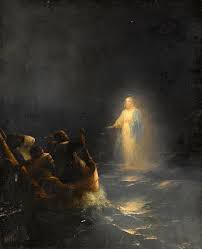
In Abbé C. Fouard’s view, “The effect which this sudden stilling of the tempest had upon the disciples’ minds was altogether different from the enthusiasm caused by the multiplying of the loaves. ‘They had not grasped the lesson of the loaves,’ says St Mark, mournfully, ‘so dulled were their hearts.’ Too dull and too sordid of soul to conceive of any spiritual kingdom as yet (…) When they saw that He meant to refuse the sceptre now offered Him, they were so sore at heart and so dissatisfied that they quite forgot the almighty attributes of their Lord, and dared to resist His commands. It required a night of anguish and terror, like this through which they had passed, to bring them to a knowledge of their fault. But this trial tore the veil from their eyes; as they beheld Jesus bidding the roaring floods be still, and holding the powers of nature beneath His feet, they recognized ‘He it was, that spread out heaven to be his covering, made ocean a floor under his feet’ [Psalm 104: 2]. Throwing themselves on their faces before Him, they worshipped and adored Him, saying: ‘Thou art indeed the Son of God.’”[1]
Today, you and I toss hard in the bark of Peter that is the Catholic Church. In the course of her long history, we have, as a matter of course, witnessed very marvellous things, and at other times, the most appalling and distressful things as well. Let us not overthink and overreact, nor ever lose hope. Let us collect our thoughts, reaffirm our resolve, act with determination, and above all, hope and pray that Peter and his disciples will not let the bark sink....
Finally, let us behold the example of St Paul who trusted in the Lord through thick and thin. In today’s Second Reading (Rom 9: 1-5), he is ready to do anything for the salvation of the Jews, even to the point of excluding himself from God’s favour! So, did God fail, or at least fail him? How to account for the so-called Chosen Race’s lukewarm response to Jesus? The genial Apostle answers this question in three parts, in the present chapter (9) and in the two that follow (10, 11), throughout endorsing God’s ways and praising His unstinted fidelity to His promises. As the Psalm (84: 13-14) says, let us firmly believe that
The Lord will make us prosper
and our earth shall yield its fruit,
Justice shall march before him
and peace shall follow his steps.
Banner: https://rb.gy/judir
[1] Abbé C. Fouard, Jesus Christ the Son of God. Goa: Don Bosco, 1960, p. 235.
Transfiguration: wowed by God
It may come as a surprise to many that the eighteenth Sunday of the present Yearly Cycle is dedicated to that most celebrated event known as the “Transfiguration of Jesus”, which is described by Evangelists SS Matthew, Mark and Luke, and referred to warmly by St Peter in his Second Epistle. It is a fixed feast, that is to say, an annual celebration that is held on the same calendar date every year, 6 August, whose historical explanation is sometimes lost on us.[1] It is thus one those feasts in Ordinary Time that takes precedence over the Sunday liturgy. The momentous episode is also remembered some time in Lent. It contrasts so strikingly with that sombre liturgical season that it gives us a WOW experience, as I distinctly remember having had when I first heard the respective Reading as a child.
The Transfiguration refers to the moment when Jesus became radiant in glory on what is traditionally believed to have been Mount Tabor. The incident prefigured in the Book of Daniel, an excerpt of which makes up today’s First Reading (7: 9-10, 13-14). The Prophet saw “one like a son of man coming, and he came to the Ancient of Days [Eternal God] and was presented before him. And to him was given dominion and glory and kingdom, that all peoples, nations, and languages should serve him; his dominion is an everlasting dominion which shall not pass away, and his kingdom one that shall not be destroyed.”
Who could fail to see here a foreshadowing of Our Lord Jesus Christ? According to the Gospel of St Matthew (17: 1-9), Jesus’ face shone like the sun and his clothes became white as light. There appeared two Old Testament figures, Moses and Elijah, with whom Jesus conversed very freely. All of this the apostles Peter, James and John were privileged to witness, thanks to a special bond they enjoyed with their Master. To them alone was revealed here the mystery of Jesus’ fully human and fully divine nature.
On the other hand, the fully human nature of the apostles let them see but not fully realise the depth of this mystery. They seemed eminently qualified to go out and sing of the Lord’s wonders from the rooftops, but alas, Peter made an infantile suggestion instead: “Lord, it is well that we are here; if you wish, I will make three booths here, one for you and one for Moses and one for Elijah.” Isn’t this how we too react to supernatural events: by reducing them to mundane standards?
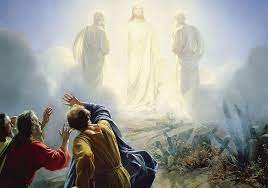
Of course, none of what Peter had envisaged actually happened. Rather, a bright cloud covered them, and that rare voice of the Father in Heaven endorsed Jesus’ identity as God’s Son, just as He had done at His Baptism in the Jordan. Jesus instructed them not to tell anyone about the mountain experience until He rose from the dead. Meanwhile, the experience must have strengthened the faith of the apostolic trio. Not only did they become excellent witnesses to the Faith; Peter and James became martyrs, and John, the only apostle to die a natural death, went on to write the Book of Revelation.
The Transfiguration is easily a highpoint in the Christian journey of faith. It is a revelation of time past, present and future. Here, Moses represented the Law that had been given to the people of Israel on Mount Sinai, while Elijah symbolised the great prophetic tradition. To Jesus’ contemporaries, there ought to have been no doubt that His earthly ministry was intimately connected to His glorious divine origin. Finally, all of what had happened pointed to a future that we as believers eagerly look forward to.
Nothing better than the convincing voice of St Peter (2 Pet 1: 16-19) that sets all doubts at rest. The eyewitness that he was says: “We did not follow cleverly devised myths when we made known to you the power and coming of our Lord Jesus Christ, but we were eyewitnesses of His majesty.” He calls upon all generations to pay attention to “the prophetic word made more sure. You will do well to pay attention to this as to a lamp shining in a dark place, until the day dawns and the morning star rises in your hearts.”
However, do we ever think of it all? Our days stretch out in an endless vista as we go about our petty tasks hardly aware of our listless attitude toward supernatural life. Are we wowed by the remarkable foreshadowing of the Beatific Vision? In the light of what has transpired in our State of late, ironically on Pastor’s Day, there is much to be concerned about our individual and communitarian living. Let us ardently pray that our Pastors shepherd their flocks wisely, and not stray into unknown pastures; that they who are moulded unto the heart of Christ set their hearts on heavenly things and are wary of the ways of the world; that, rightly priding themselves on being the Alter Christus, they may feed the flock with the Living Bread, putting the spotlight on God’s Word rather than on their own.
Finally, let us pray for a Transfigured world: that you and I may come to know intimately the True God who never fails to wow us.
Banner: https://rb.gy/rutwu
[1] On the history of its institution, see https://www.newadvent.org/cathen/15019b.htm
Treasures of the Kingdom
We are finite and never masters of our destiny, so we beseech God to satisfy our many needs. But alas, when we pray, we highlight a whole gamut of material needs and put spiritual needs on the back burner. Hence, Jesus’ classic declaration: “Man does not live by bread alone but by every word that comes out from the mouth of God.” Or as today’s psalm says, “The law of your mouth is to me more precious than thousands of gold and silver pieces.”
In striking contrast, King Solomon in the First Reading (1 Kings 3: 5, 7-12) is one whose prayer was pleasing to God’s ears. The child servant king, who replaced his father David, was at Gibeon, then the most important high place of prayer (the temple of Jerusalem was yet to be built). At its altar he presented a thousand burnt offerings and in a dream the Lord urged him to ask for his heart’s desire. Did he ask for more power, health and wealth, name, fame and influence? None of that. All he wished for was an understanding mind to govern his people and an ability to discern between good and evil – in short, wisdom, which for sure isn't the same as mere knowledge.
What a wonderful pearl of wisdom for our administrators, parents, teachers and other leaders holding positions of responsibility to acknowledge and cherish! For this end, it is of the essence that we first see life in a proper perspective, discerning the true, the good and the beautiful. We ought to have a clear direction and the right priorities. We ought also to realise our limitations and let God be in charge. In the ultimate analysis, all signs will point to Heaven, where our real treasure lies.

While the Gospel (Mt 13: 44-52) is still in parable mode on yet another Sunday, the Hidden Treasure and the Pearl form a striking pair showing the need to aspire to the Kingdom of Heaven. The fact is we would do anything to attain the Kingdom (read God) if only we had understood its perennial value; everything that the world has to offer would then pale into insignificance. For example, if the Kingdom were a “treasure hidden in a field”, one would endure great sacrifices to buy the field for the sake of the treasure! Similarly, a connoisseur merchant, on finding a rare pearl, would do all that it took to lay his hands on it.
But that is not all. The parable about the Kingdom is dovetailed into another – that of the Fishing Net – which is pure eschatology. This time around, the Kingdom of Heaven is compared to a fishing net that has caught fish of all kinds: the bad will be instantly thrown away. Only an unusually dull-witted or spiritually dead person will fail to see that that is what will become of us if we do not fall in line with God’s commandments: like the weeds that will be bundled together and burned, and the fish that will be thrown away, we might have a similar fate on the last day.
Are we ready to accept God’s plan for us as individuals and as a race, or are we going to remain a deceptively all-knowing and self-serving generation? Readiness to align our will to God’s and to fall in line with His plan is a basic attitude to be cultivated before formulating any prayer. There is no denying that God knows best and, as St Paul puts it (Rom 8: 28-30), “all things work for good for those who love God.” So, why not acknowledge God as the alpha and omega of our life, the be-all and end-all of our very existence?
In the Lord's Prayer we say: "Thy Kingdom come...". What does it mean? If we have properly understood Jesus’ teaching, we will not hesitate to apply the wealth of the Scriptures to everyday situations. God will be our constant companion, and we will proclaim Him to one and all. That will be to seek first the Kingdom of God; and we can be sure that whatever else we need will be given unto us (Cf. Mt 6: 33). Oh, what a world of difference between divine and human wisdom! Can we commit to being like householders ever bringing out old and new treasures to the fore?
Banner: https://rb.gy/pwl6v
Reap what you sow
Today’s Readings are an eloquent commentary on how modern man should invest in living wisely. The fact that “we have no time to stand and stare”, as the Welsh poet W. H. Davies so beautifully puts it, sets a huge limitation on our physical, social, psychological and spiritual wellbeing. We fail to realise how we fritter away our lives when we should only be thanking God for adding life to our days, and not simply days to our life. Today’s Readings are thus a fascinating eye-opener for our jet age.
Come to think of it, they are apt for all times, for human nature has hardly changed since its inception, and we, like little children, still need to be reminded of what is good for our health and what is not. The First Reading (Wis 12: 13, 16-19) therefore goes back to the basics, showing us the omniscience and omnipotence of our God who, at the same time, cares even for the least of His creatures. He balances justice with mercy – providing an inspiring model for human administrators of all time. In our times of misery, the wisdom of Solomon draws our attention to the comforting reality that there is n-o-n-e like God, Who fills us with hope by forgiving us our sins.
Of course, it is one thing to sing ‘O Lord, you are good and forgiving’ when the going is good; and quite another when our minds are beset by fear and our hearts clouded by doubt. Under such circumstances, do we still have the verve to praise the Lord and trust Him, as Job did? It is not easy but try we must – and we can rest assured that God will turn and take pity on us. All we need is to have our ear to the heartbeat of Jesus our Lord.
St Paul in the Second Reading (Rom 8: 26-27) is quick to point that “the Holy Spirit helps us in our weakness; for we do not know how to pray as we ought, but the Spirit Himself intercedes for us with sighs too deep for words.” Several masters of Catholic doctrine as well as saints of old have taught us, by word and example, that it is of the essence to trust in divine providence. We can gain insight not through prayers, rituals and pious practices alone but also through our sufferings in the daily grind. It is legitimate to ask for what we want but we also ought to learn to align our will to the will of the Father in Heaven.

Finally, the Gospel (Mt 13: 24-43) the parable about the Kingdom of Heaven comes close on the heels of last Sunday’s Parable of the Sower. Jesus compares the Kingdom to a man who sowed good seed in his field. Jesus warns us against blindly trusting the world, for its spirit drives a wedge between us and God, just like our enemies do who plant weeds among the wheat we have sowed. Consider how many parents today lament the company their children keep! No wonder Don Bosco urged the youth to avoid bad company like poisonous snakes.
The problem of evil, weakness and death that the parable raises will have its final solution only at the end of times: the Father will have the weeds bound in bundles to be burned, whereas the wheat will be gathered into His barn. It is unknown when this will happen, but then, its delay amounts to opportunities for sinners to repent!
Meanwhile, we ought not to leave it all to God alone. You and I are duty-bound to discuss the divine plan of salvation and strive towards influencing people accordingly. For instance, have we spared a thought for Manipur? And what have we done concretely in that regard? Let us not lull ourselves into believing that we are powerless; we have God on our side, yet how fervently have we prayed? On the other hand, those who think they are powerful have their days numbered and will soon come to reap what they have sown.
Jesus also compares the Kingdom of Heaven to a mustard seed which, though the smallest of all seeds, grows into the greatest of shrubs and becomes a tree. Furthermore, He likens the Kingdom to leaven that a woman has hidden in three measures of meal, till it is all leavened. While the former parable convinces us that, no matter how poor, humble or apparently inconsequential we may be, God takes care of our future; in the latter parable Jesus hints that everything that has been hidden hitherto will come to light through His Bride, the Church. Truth will prevail.
It is therefore fundamental that we continually refresh our understanding of God’s Kingdom. Our aim should be to let His Kingdom come here on earth and have all nations gather to worship Him. It will undoubtedly be a win-win situation for God and man. Although the world we live in is a bundle of contradictions let us not lose heart. We are sinners, yet called to be disciples of Christ. We who are made in the image and likeness of God are called to transcend human nature and embrace divinity! We have been endowed with a free will and would do well to use it wisely. The bottom line is that we will reap what we have sown.
Banner: https://rb.gy/17fm0
Tiklem
July 19, 2023Goan Literature in Konkani,Goan Short Story,Goan Literature in TranslationGoan Literature,Translation
Conto de autoria de Willy Goes | Traduzido do concani, por Óscar de Noronha*
“Ó burro, pense um bocadinho, seu animal! Ó seu búfalo, faça uso do seu bom-senso, se é que lhe resta algo! Ó seu boi, estão a desmanchar-se todas as propostas de casamento que a sua irmã recebe. E sabe quem é a causa disso? Você!” disse a mãe ao Brikston, dando-lhe um forte puxão de orelhas.
Brikston reagiu com tanta raiva, difícil até de imaginar. E por quê? Não porque tivesse sido chamado burro ou boi, mas porque a mãe lhe deu um puxão de orelhas.
“Não sou rapazola de dez anos, para estar assim a dar-me um puxão de orelha,” disse o filho.
Brikston tinha vinte e oito anos… não se sabendo se se devia considerá-lo moço ou homem. Era bem instruído, mas a sua bebedeira lhe estava a dar cabo da vida. Era dono de um táxi, mas em vez de ele o conduzir, para melhores lucros, deixando o táxi a cargo de um motorista, ficando ele o dia todo sentado a beber na taverna. Este não dava conta do dinheiro ganho; e, por sua vez, o dono contentava-se com a receita desde que lhe assegurasse a sua garrafa.
“Ó mãe, com esse forte puxão de orelha, agitou a minha cabeça e me causou muita raiva! Por isso, pare de falar, antes que eu expluda como um vulcão,” disse em tom de ameaça.
“Ó, você e a sua raiva, meto-os numa lata. Ora, você é bêbado. Não temos medo da cobra feita de folíolo nem da fúria de um bêbado. Oiça agora o que eu lhe tenho a dizer. A sua irmã recebeu uma proposta de casamento. O noivo é empregado do Estado. São quatro irmãos; e este é o mais novo. São três rapazes e uma rapariga. A irmã é tikli – nasceu após três rapazes. Os dois mais velhos já são casados. O noivo está resolvido a não casar enquanto não case a sua irmã,” disse a mãe a Brikston.
“Ó meu Deus! Então, por ser tiklém, esta coitada vai ficar solteira. Ninguém casará com ela; nunca se realizará o seu casamento nem o do irmão. Rejeite a proposta, e veremos outro noivo para a nossa Florishka,” sentenciou o Brikston, como se não houvesse dificuldade alguma em se achar noivos.
“Ó seu boi, quem vai achar outro noivo? Porventura, estarão eles à venda no mercado? A família convidou-nos a ir hoje à sua casa. Diz que enquanto a irmã não achar noivo, ele quer ficar seguro de noiva. Eu estou já velha, é sua responsabilidade casar a sua irmã. Vá com ela à casa do rapaz,” ordenou-lhe a mãe, acrescentando: “E não se embebede. Se não, pode ele rejeitá-la por ser irmã de bêbado. É o que tem sucedido em casos desses.”
“Bom, farei como a mãe quer. Vou levar a Florisha à casa dessa gente; e também verei se a irmã do rapaz encontra noivo,” disse Brikston, tomando sobre si a responsabilidade de casar a irmã.
Brikston e Florishka chegaram à casa do potencial noivo. Foram bem recebidos, sentaram-se e estiveram a conversar. Stanzar, o noivo, era funcionário público do Upper Division Clerk - UDC. Não tinha vícios de fumar nem beber. Pela conversa, via-se claramente que Stanzar se simpatizara com Florishka. A sua irmã constituía o único impedimento: ele não casaria antes de ela se casar.
“Onde está a sua irmã? Podemos conhecê-la antes de partirmos?” perguntou Brikston a Stanzar.
“Sem dúvida, não deixem de falar com ela antes de partir, e vejam se lhe acham noivo. Mas só vos previno: ela é tiklém: nasceu a seguir a três irmãos,” explicou Stanzar. “Trishka… Trishka, anda cá.”
Vindo ao encontro dos hóspedes, Trishka cumprimentou-os com uma risada. Era bem-parecida, de tez clara, de estatura mediana. Tinha sempre um riso na cara e porte jeitoso. Era de encher a vista. Logo que a viu, Brikston ficou estupefacto, preso ao seu lugar, porém, como se a levitar. Dentro do seu peito, o coração palpitava sem parar.
“É esta a sua irmã? Como é seu nome?” perguntou Brikston, embora apenas há uns momentos Stanzar a tivesse chamado pelo nome.
“Trishka. O meu nome é Trishka. E o seu?” perguntou suavemente.
Ouvindo essa voz tão doce, Brikston levantou-se e, aproximando-se da Trishka, disse, estendendo-lhe a mão: “O meu nome é Brikston. How do you do?”
“Nice name. I am fine, thank you.” respondeu Trishka, apertando a mão.
Após mais dois dedos de conversa, Brikston levantou-se, passou uma vista de olhos por todos, e dando uns passos em direcção de Stanzar, despediu-se com um aperto de mão.
“Não sei se você gostou ou não da minha irmã, e nem me preocupo com isso. O facto é que gostei da sua irmã, Trishka. Poderíamos conversar mais sobre o assunto, o mais cedo possível, em minha casa. Por hoje é só. Vamos embora. Mog asum di.” E dito isto, partiram.
“O quê, seu bêbado! Você deu a palavra a essa tiklém? Antes disso, devia pelo menos consultar-me, seu animal! Não sabia que ela é tiklém? Quem se casa com uma tiklém?! Uma vez boi, sempre boi.”
Dito isso, a mãe de Brikston ia dar-lhe um puxão de orelha, quando ele, segurando a sua mão, impediu-a.
“Diga o que quiser, mas não me puxe a orelha,” disse Brikston terminantemente à mãe, apontando o dedo no ar. “Isso de tiklém-biklém não me interessa. É tiklém não por culpa própria! Coitada, nasceu depois de três irmãos. Que mal há nisso? Não presto atenção a essas superstições. Se isso de ser tiklém-biklém lhe interessa, isso é lá consigo. Vou casar-me com Trishka, and that is final!” disse Brikston firmemente.
“Tens alguma coisa a dizer, querida, a respeito da decisão do nosso bêbado?” perguntou a mãe, dirigindo-se à Florishka.
“Mãe, em primeiro lugar, pára de lhe chamar bêbado, boi, burro… Tu mesmo lhe deste o nome de Brikston, então porque lhe chamas de bêbado, boi, burro…. Quanto mais lhe chamares de bêbado, mais ele beberá. Chama-lhe pelo nome próprio, com carinho, e vê lá como ele vai mudar. Em segundo lugar, já que ele escolheu noiva, deixa-o casar com a rapariga. Isso de tiklém-biklém é cantiga.”
É claro que a mãe não gostou do que ouvira da boca de sua filha Florishka.
“Já percebi. Disse o rapaz não casará sem que a irmã fique arrumada: é por isso que tu estás a apoiar o teu irmão! Se por casar com a tiklém lhe vier a acontecer algo, seja a ele ou a nós, serás tu responsável. Percebeste?” disse a mãe, furiosa.
Correram os dias no meio dessa polémica, mas Brikston, sempre intransigente, casou com Trishka. Um mês antes, haviam casado os respectivos irmãos, Florishka e Stanzar.
O casamento de Brikston com a tiklém provocou grandes prejuízos a muitos co-aldeãos, ou seja, às tavernas, pois, Brikston parou de se embriagar e nem sequer suportava o cheiro a álcool. Mais, ficou desempregado o motorista do táxi, pois Brikston tomara-lhe as rédeas, vindo a ganhar rios de dinheiro. Aos poucos, teve meios para adquirir mais dois carros de praça, de modo que, em três anos de casado, já tinha três carros em casa, um conduzido por ele próprio e os outros dois entregues a motoristas da sua confiança. Estes prestavam contas regularmente. Além disso, Brikston consertou a sua casa e investiu dinheiro no banco. E assim se tapou a boca da mãe.
Ao fim de cinco anos de casamento, o casal tinha já três filhos. E estando grávida pela quarta vez, a mãe de Brikston aguardava a sua hora, ela que há tantos anos esperava que lhes viesse algum azar por via da tiklém. Efectivamente, nasceu-lhes uma menina, uma nova tiklém.
“Já viu isto? Já lhe tinha prevenido para não casar com a tiklém. Veja como a tiklém nos trouxe uma nova tiklém, como não podia deixar de ser... e quem casará com ela?” – desafiou a mãe ao Brikston.
“Ó mãe, esta criança, coitadinha, acaba de nascer. Quando ela crescer e estiver na idade de casar, encontrará um outro como eu; e tal como a presente tiklém me trouxe grande felicidade, também esta nossa fará o mesmo. Entretanto, a mãe faça votos para que chegue a ver a felicidade da recém-nascida.”
* Nota do Tradutor: Embora a língua concani modernamente se escreva sem acentos ortográficos, vai acentuada a palavra tiklém só para indicar a pronúncia adequada aos leitores portugueses.
Sobre o Autor
Willy Goes (1963-) é contista e autor de nove livros, sete em concani e dois em inglês. Actualmente é o Director do Goa College of Art. Foi membro do Conselho Consultivo do Concani na Sahitya Akademi, Nova Delhi. Apresentou trabalhos em seminários e ganhou prémios pela escrita criativa e fotografia.
Publicado na Revista da Casa de Goa (Lisboa), Série II, No. 23, Julho-Agosto de 2023, pp. 57-62 https://rb.gy/8qj52
Ligeiramente editado neste blogue.
Banner: https://rb.gy/4cw48
